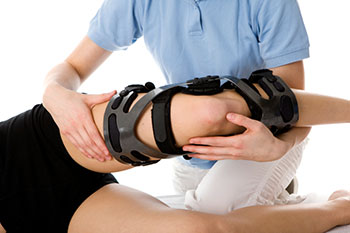Physical Therapy: goal is to improve movement, reduce pain, restore functionality, and prevent disability.

What is Physical Therapy?
Physical therapy (PT) is a method of treatment that combines physiology with exercises and applies them to treat an injury. Some of the places where physical therapists practice include hospitals, outpatient clinics, private practices and nursing homes. Physical therapists treat patients of all ages that have medical conditions, health problems, or injuries that limit movement and functionality. Multiple treatment techniques are used to improve movement, reduce pain, restore functionality, and prevent disability. In essence, a physical therapist is a movement specialist, highly trained to understand and treat all of the body's components involved in motion, like joints, tendons, ligaments, and muscles.
What Conditions Do Physical Therapists Treat?
Physical therapists provide treatment for a wide variety of conditions. For example, they can treat neck and back injuries, strains or sprains, fractures, amputations, arthritis, and multiple sclerosis. Physical therapy is often required for individuals with a work or sports related injury.
Patients should see a physical therapist when they have pain in any part of their body involved in motion, or if any type of movement accentuates a particular pain. The patients should also consult a physical therapist if they suffer from any of the conditions mentioned listed above. Patients routinely require physical therapy after surgery, especially for orthopedic conditions.
What Are Some Of The Treatments a Physical Therapist May Use?
- A physical therapist can educate a patient on the principles of strengthening and stretching of muscles, as well as create a specialized stretching and strengthening routine. This routine may help manage pain, accelerate healing, and restore mobility and flexibility.
- Physical therapists can demonstrate appropriate posture and ergonomic principles to minimize neck and back strain.
- Additional treatment include:
- Ice and/or heat therapy
- Manually stretching the patient
- Deep tissue massage (manipulation of both muscles and connective tissues)
- Ultrasound: Painless sound waves are transferred from an ultrasound probe or wand to a specific body part. The sound waves travel through the skin into the deeper tissues and generate heat. The heat can help relieve pain, reduce muscle spasms, and accelerate healing.
- Electrical nerve stimulation (TENS): A painless electrical current is used to stimulate specific nerves and help relieve pain. Electrode patches are applied to the skin and then attached to a stimulator unit that controls the amount current and the treatment time. This is a noninvasive treatment; the current reaches the nerves by traveling from the unit to the patches and then through the patient's skin.
What Are The Limits Of Physical Therapy?
Physical therapy has some limitations. There are physical conditions and injuries that are beyond the scope of a physical therapist's treatment methods. For example, if a ruptured disc is the source of neck or back pain, surgery may be necessary to relieve the pain. In such cases, a physical therapist would be part of a patient's postoperative rehabilitation routine. For patients with a permanent disability, a PT may not be able to cure the disability, but they may be able to mitigate the effects of the disability.


